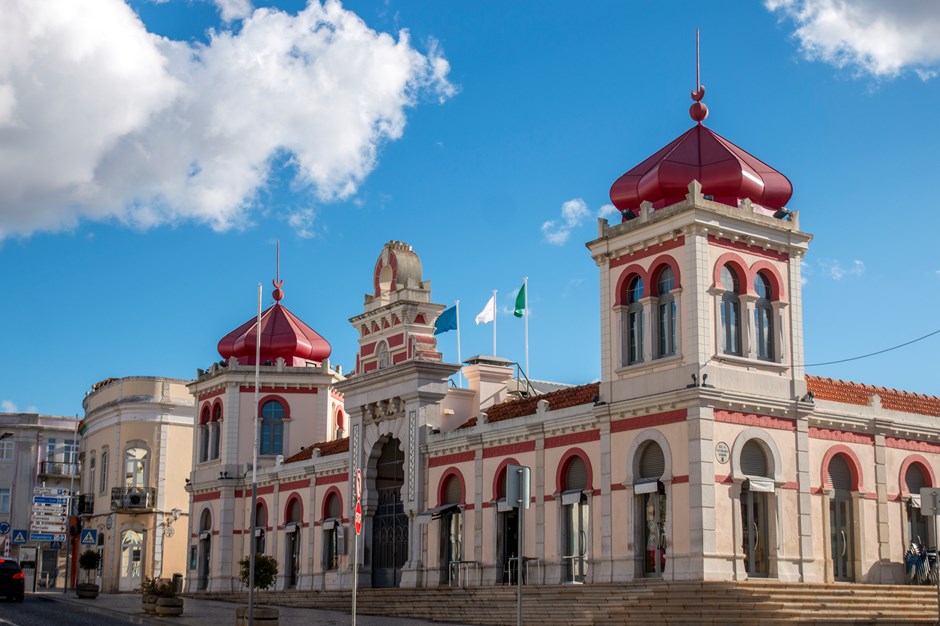
Visitors are drawn to Loulé, for its characterful historic center, lively markets, and genuine Portuguese atmosphere. It’s usually visited on a day trip for its 13th-century castle and famous market, but is not where tourists choose to stay.
Loulé is a peaceful and unhurried town, but it comes alive on Saturday mornings when two additional markets are held in the town. There is a farmers’ market hosted in the streets surrounding the covered market and a vibrant gypsy market on the edge of the town.
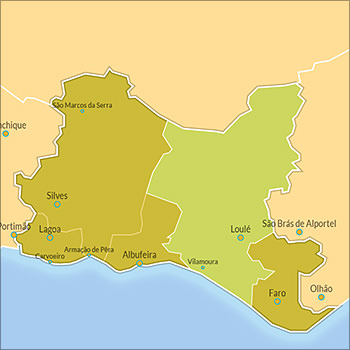
The main sight in Loulé is the Arabian-inspired covered market, with stalls selling fresh produce and regional handicrafts. Surrounding the market are busy shopping streets, tree-lined plazas, and a warren of alleys, which have barely altered since the medieval period. Within this delightful historic center (which is called ‘Cidade Velha’), is an ancient castle, a Gothic church, and traditional tradesmen’s houses.

Loulé has a very different atmosphere from the hectic resort towns, while the numerous fascinating sights can easily fill a half-day of sightseeing.
The city is the administrative center of the greater Loulé county, which includes a coastline stretching for 13.5 kilometers (over 8 miles). On this coast, about 12 kilometers (7 miles) from the city, are the popular resorts of Quinta do Lago, Vale do Lobo, Vilamoura, and Quarteira. The small village of Almancil, with its iconic, azulejo-tiled church, is also part of Loulé.
Nearby you also have the biggest shopping mall in the Algarve, the MAR Shopping. In addition to major international and national brands, this mall has a multiplex cinema, a food court, and an open-air designer outlet.

What to see and do in Loulé
Loulé is the best location in the Algarve to experience typical Portuguese daily life; the streets are packed with Portuguese shoppers, the cafes are full of locals, and the restaurants serve delicious regional dishes.
The main event in Loulé is the Carnival, with three days of partying on the streets. It’s the biggest Carnival in the Algarve and one of the most famous in Portugal, with a parade of floats, lots of music, and people in costumes. Another major event is the Noite Branca (“White Night”), which marks the end of summer (on the last Saturday of August). Everyone dresses in white and gets together on the streets for live music and other entertainment.
• Cidade Velha
Between the castle and the Igreja Matriz, the delightful maze of narrow cobbled streets around the Rua Almeida Garrett is a labyrinth of narrow cobbled alleys and backstreets that follow the medieval layout of the town. This section of Loulé is best explored by simply getting lost in it and wandering through the series of charming alleyways. Along these streets are traditional craftsmen’s houses, which have their workshops and storefronts opening onto the street. Above the small workshops are the family houses, which have been owned by the same families for generations. In these small workshops, the old craftsmen ply traditional family trades, including copper working, pottery, tile painting and furniture making.
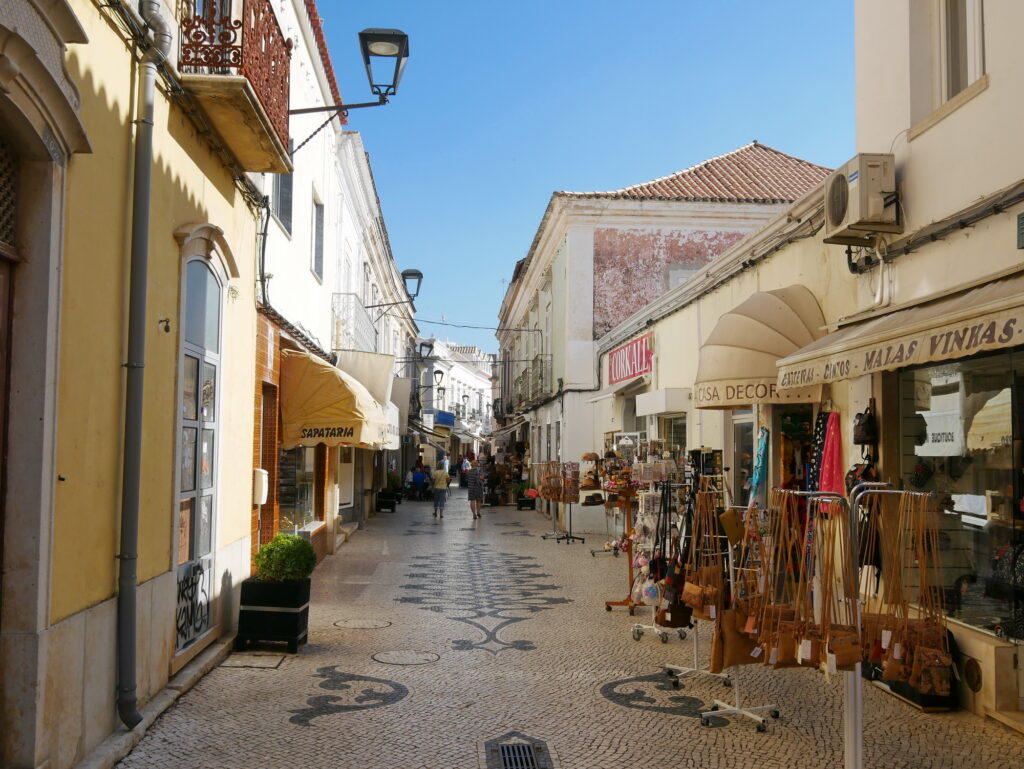
• Loulé Castle
Every castle in the Algarve was damaged or completely destroyed by a major earthquake in 1755, but a significant part of Loulé’s survived and was restored in the early 20th century. The castle is located in the center of town, and although most of its defensive walls have disappeared, three towers still stand. It was built in the 13th century over a Moorish fortification, and in the former governor’s residence is now a small museum that displays artifacts from the region. And it dates back to the Bronze Age and the Roman and Moorish occupations.
Inside is also the reproduction of a medieval kitchen, and in the courtyard, you can see a well and an old city gate. For a view over Loulé, climb to the top of one of the towers.
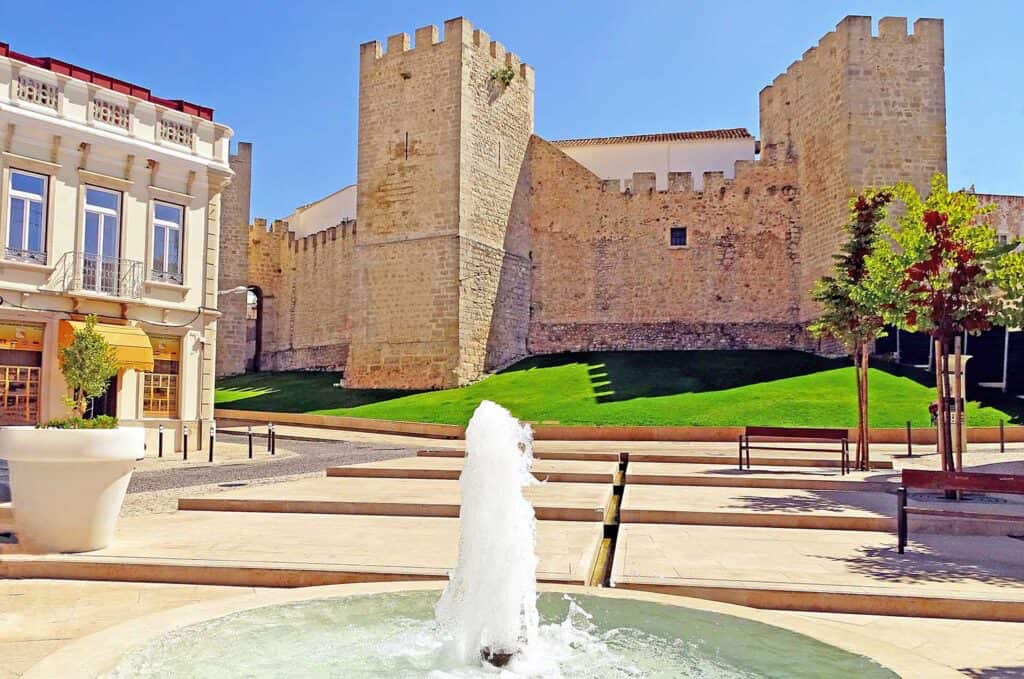
• Municipal Museum
This museum is housed in the castle and contains exhibits of Roman and Bronze Age artifacts discovered in the Loulé region. The grounds of the museum have been excavated to reveal the Moorish buildings that the castle was constructed upon.
Loulé Castle’s origins are from the Moorish era, but the three towers and connecting battlements were constructed by the Portuguese in 1260. The castle was severely damaged by the 1755 earthquake and was extensively restored during the 1940s.
The best views of the castle battlements are from the Praça Dom Afonso III.

• Mercado Municipal de Loulé
The local market is an even bigger attraction than the castle. One of the largest covered markets in southern Portugal, which hosts a variety of stalls ranging from fresh fish to local handicrafts. The building was built in a romantic Moorish style in 1908, and today it is where locals get their fresh fruits, vegetables, and fish, and this is the place where tourists go looking to experience an authentic Portuguese market. It opens every day from 7 a.m. to 2 p.m. except on Sundays and is a major destination on Saturday mornings when it expands to the exterior with products from local farmers.
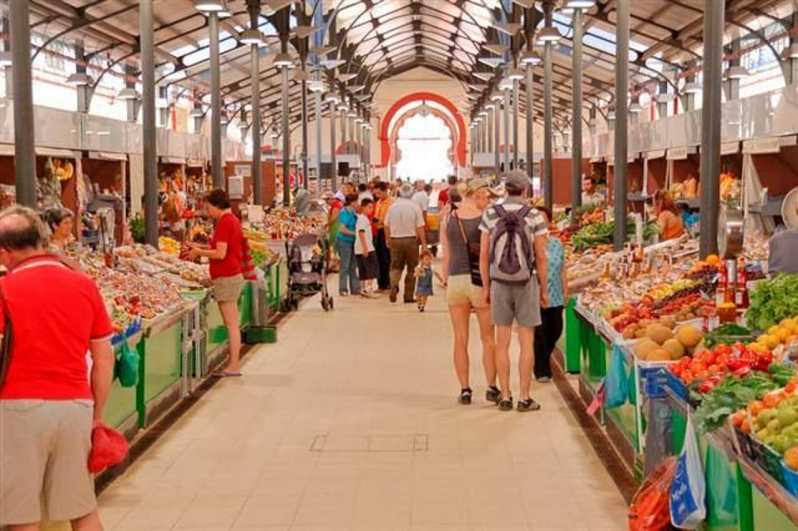
• Gypsy Market
Also on Saturday mornings, you can catch the open-air “gypsy market” on the western side of town, across from Convento de Santo António, on Rua de Nossa Senhora da Piedade. This market is designed for Portuguese locals, who want a bargain and to eat tasty street food. The market is filled with stalls selling cheap clothes, random items, and old jumble. The market is held in a 10-minute walk from the castle.

• Igreja Matriz de São Clemente
The Gothic church of Loule was constructed on the site of a Moorish Mosque, which stood there until 1249 when the Christians conquered the Algarve. The church’s bell tower was originally a minaret and is the only mosque building from the Moorish era (8-12th century) that is still standing in Portugal. It has a plain whitewashed exterior with a Gothic doorway and a clock tower that might have been a minaret. This gothic construction was damaged by the earthquake in 1755. The gilded altar and sculptures inside are from the 18th century and reflect the baroque style of the period. One of the side chapels is an example of the Manueline (Portuguese gothic) style of the 16th century.
The church was dedicated to Saint Clement, as Loulé was conquered from the Moors on November 23rd, the saint’s feast day. It’s usually open to the public in the mornings (until 12 p.m.) and closed on Mondays.
The Amuados garden in front of the church was originally a graveyard, and from this high vantage point are fantastic views over the region.
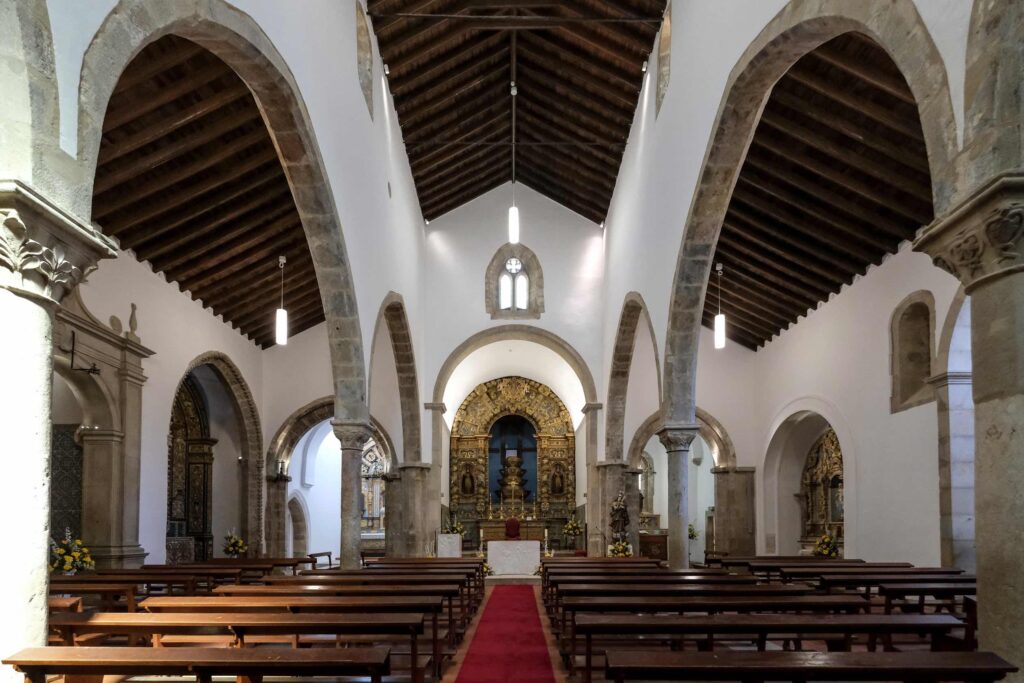
• Igreja de São Lourenço
If you want to visit just one monument in the Loulé area, make it the church of São Lourenço in the town of Almancil, about 10 minutes away. It’s not very big and looks like an ordinary church from the outside, but the interior is one of the most stunning in Portugal. It’s almost completely covered in baroque tile panels, from floor to ceiling. They date from 1730 and illustrate scenes from the life of St. Lawrence.
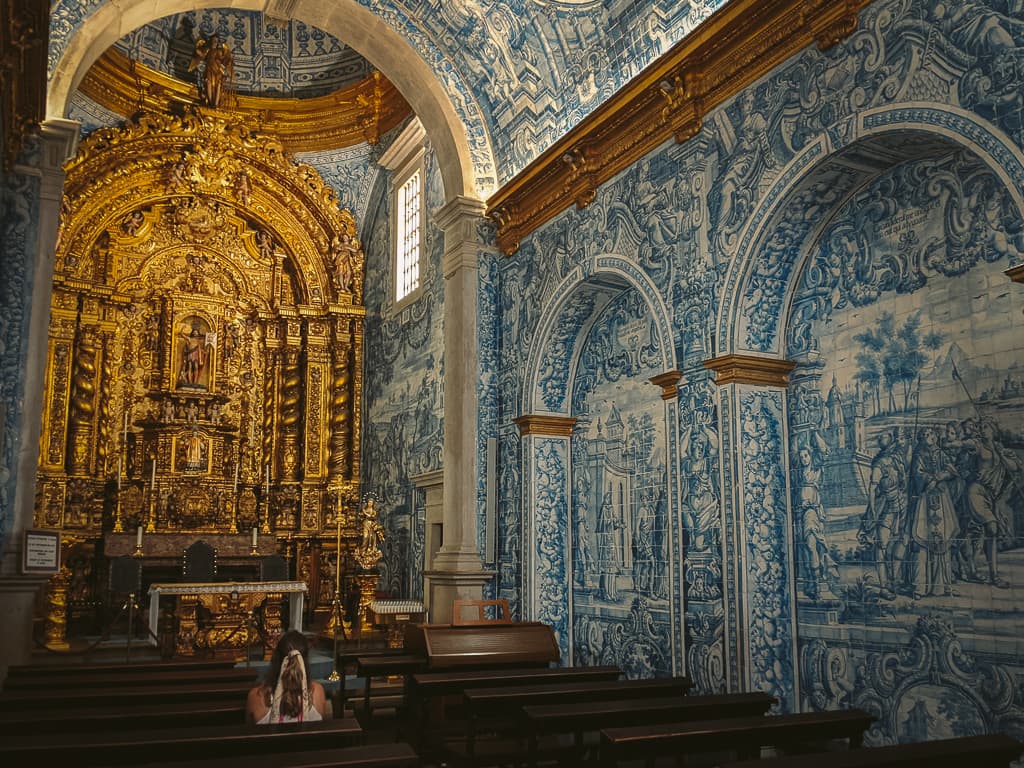
• Ermida de Nossa Senhora da Conceição
Located just a few feet from the castle entrance, this small chapel was built in the mid-17th century by King João IV, to commemorate Portuguese independence with the end of the Iberian Union. It was dedicated to Our Lady of Conception, Portugal’s patron saint. Beautifully restored in 2007, its interior is covered with baroque tile panels depicting scenes from the life of the Virgin. The gold-covered altarpiece features an image of Our Lady of Conception in the center.
The simple exterior of the chapel does not reflect the beauty contained within. The interior of the small 18th-century chapel is adorned with wonderful azulejo-tile paintings, and the altar is gilded.
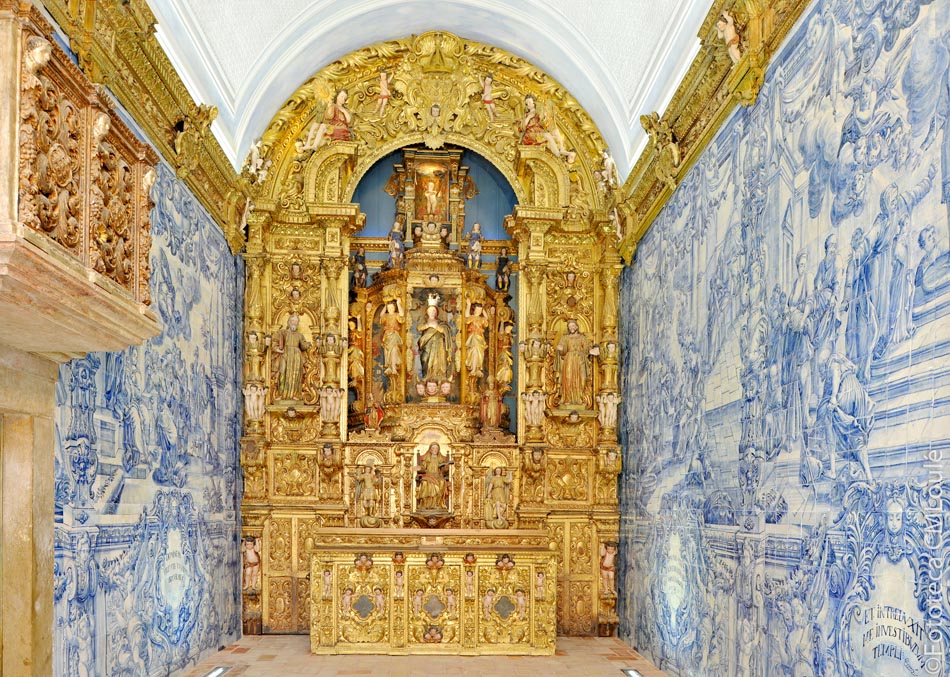
• Igreja da Ordem Terceira de São Francisco
This church with a small dome is usually closed, but if you find it open, it’s worth taking a look inside for the gold-covered and finely carved altarpiece from the 18th century.

• Santuário de Nossa Senhora da Piedade
In the center of Loulé, you’ll notice a spaceship-looking building in the distance. That’s the Nossa Senhora da Piedade sanctuary, which dates back to 1553 and has an 18th-century chapel, but most of the building was erected in the mid-20th century. It’s not a major tourist destination but is the most popular pilgrimage site in Algarve. Located on a hilltop, it’s often reached on foot by pilgrims. If you’re not devout, the reason for a visit is the view over Loulé and the surrounding countryside.

• The TechSalt Salt Mine
The salt mine of Loulé is the only deep excavation of salt within Portugal, which descends 230 m beneath the town. They organize tours of the mine as well if you want to visit it.
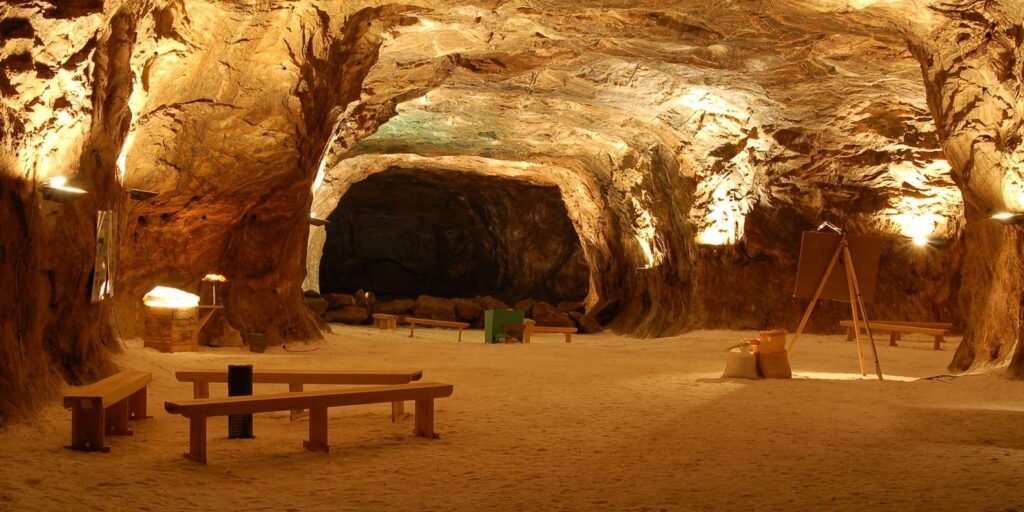
Beaches by Loulé
The beaches in the Loulé region are known for their quality and safety, proudly flying the Blue Flag and providing access to those with mobility issues.
• Praia da Quinta do Lago
It’s the best beach in the city of Loulé from 20 minutes away by car, and Algarve’s most exclusive resort. It attracts upper-class tourists, who stay at the luxury hotels and play golf at the world-class courses behind it. It’s part of the Ria Formosa Natural Park, and to reach the sand you have to walk over a footbridge. It’s never crowded, so it’s the beach for peace and quiet in the Loulé region. More active visitors can rent jet skis, kayaks, and paddles for stand-up paddleboarding. If you like to hike, follow a trail that starts by the parking lot and takes you past marshes, lagoons, and pinewoods in the company of different species of birds.
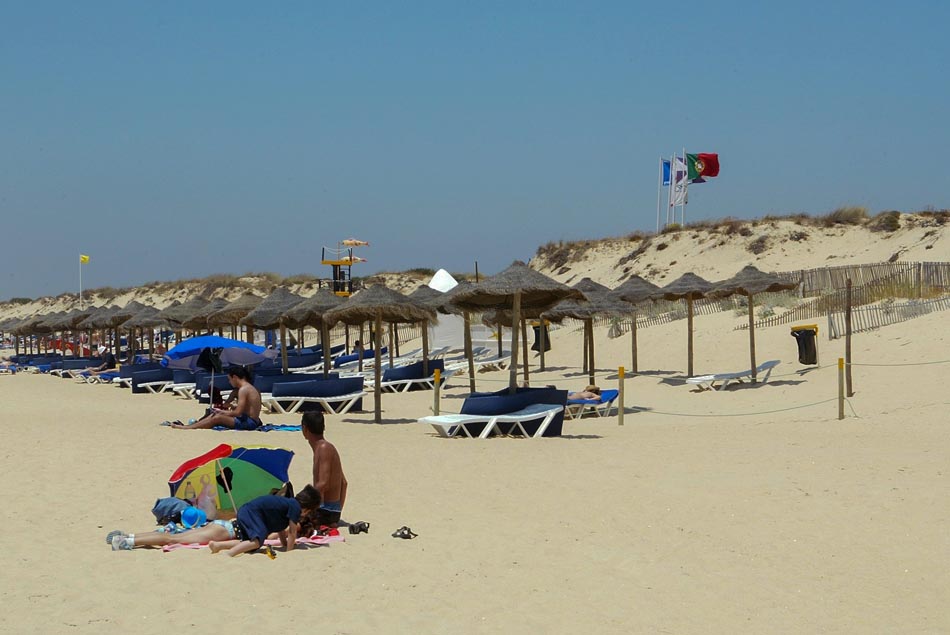
• Praia de Vale do Lobo
Vale do Lobo is another luxury resort, with opulent villas owned by the rich and famous. Its beautiful beach, backed by red cliffs, also attracts the more affluent tourists but is a little more accessible than Quinta do Lago. Above it is a cluster of restaurants and bars, often offering live entertainment in the summer.
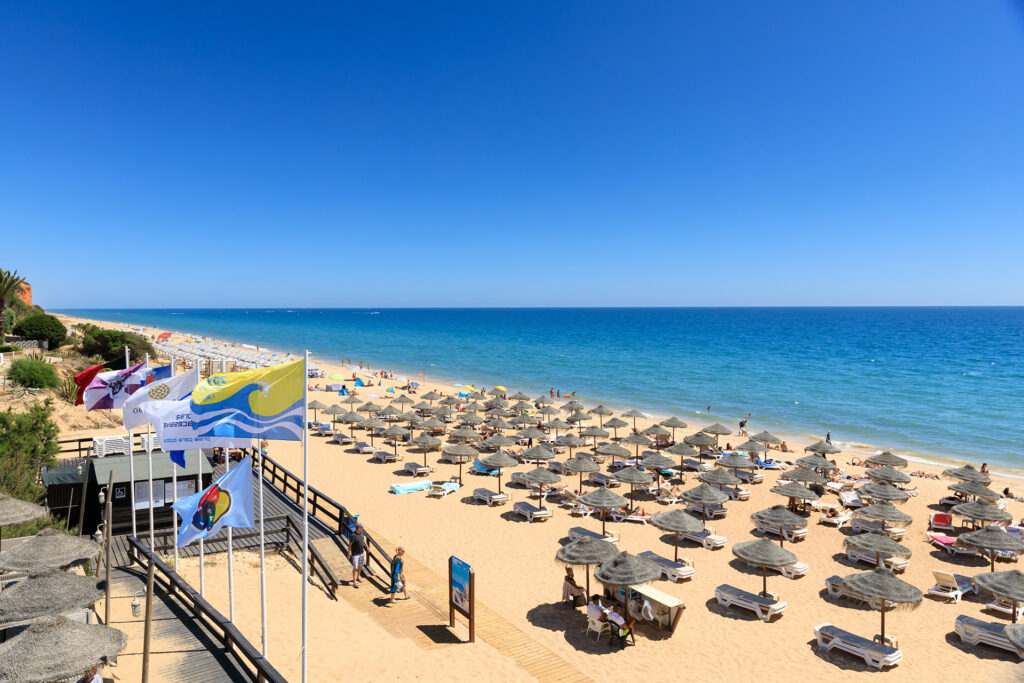
• Praia de Loulé Velho
Although popular with locals, this beach is never crowded, as tourists tend to stay by the resorts of Vale do Lobo and Quinta do Lago. It’s very calm and has a natural landscape of dunes and a pine forest where families go for picnics. There’s a popular restaurant by the pine trees, and a boardwalk leads to the beach, protecting the dunes. In addition to loungers and wicker parasols, it’s often possible to rent equipment for stand-up paddleboarding.
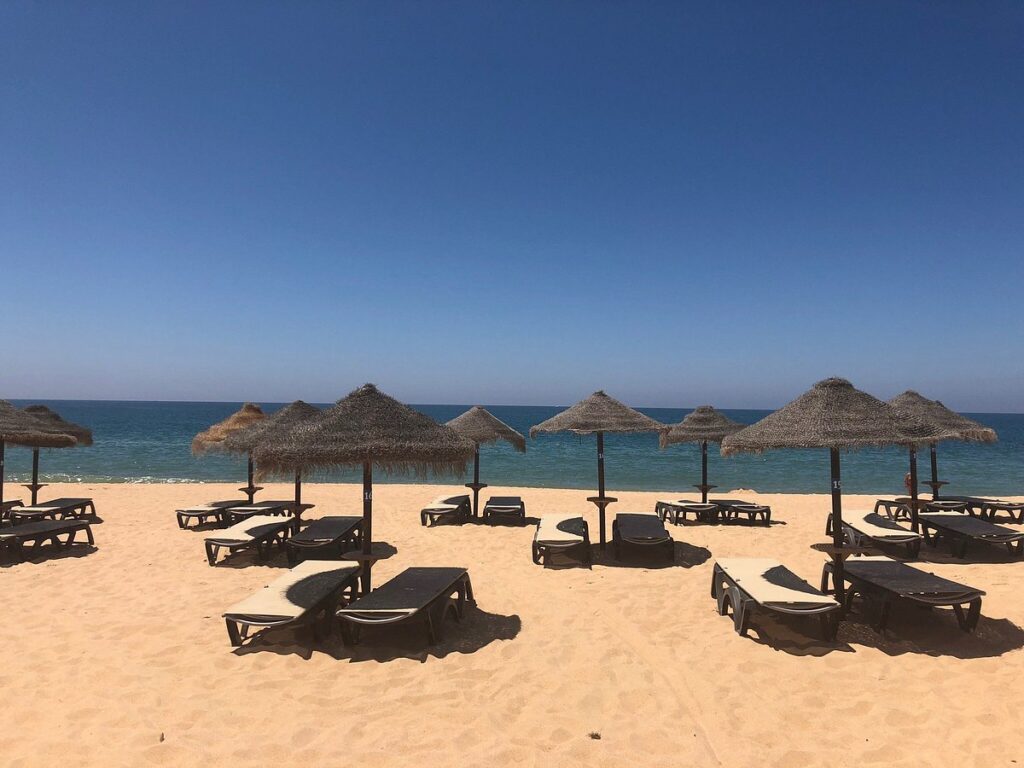
• Praia de Vilamoura
The very popular resort town of Vilamoura is 20 minutes from the center of Loulé. The beach stretches for one kilometer (over half a mile) but can get crowded in July and August. It has relatively calm waters and a trendy bar, and a short walk away is Portugal’s biggest marina, surrounded by bars and restaurants.

• Praia da Quarteira
Quarteira is the more affordable alternative to the upscale Quinta do Lago, Vale do Lobo and Vilamoura. It’s very popular with Portuguese families and the beach is often packed in August. In addition to the lower prices, there’s the convenience of having everything within walking distance. It’s backed by hotels, apartment buildings, and a promenade with restaurants, shops, fitness stations, and children’s playgrounds.
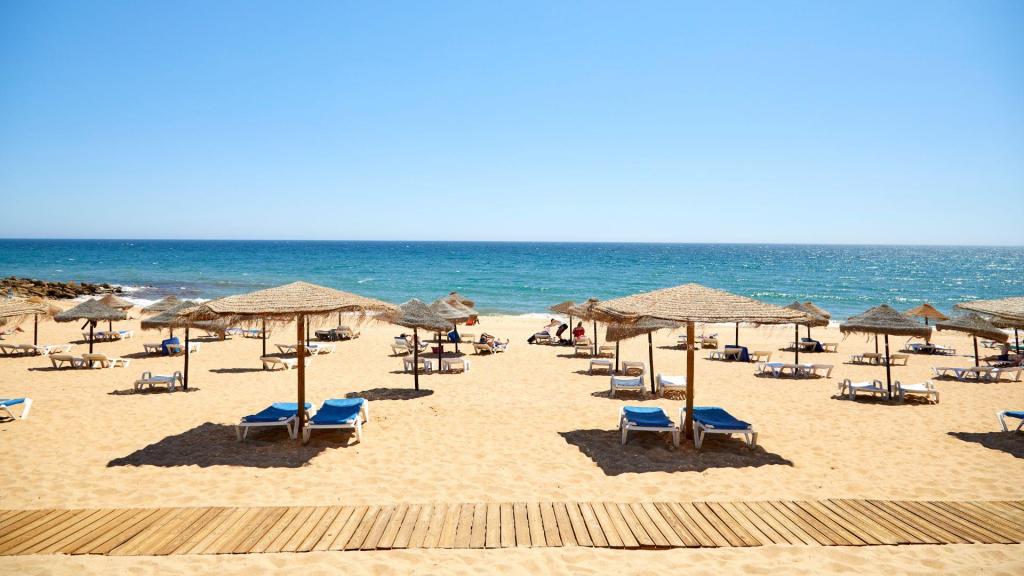
• Praia do Almargem
It’s right next to Quarteira but the backdrop is made up of pine trees and a lagoon instead of hotels and apartment buildings. It’s quite a beautiful and calm beach, with sunbeds, parasols, loungers, and water sports equipment for rent. There’s also a good restaurant with outdoor seating, offering grilled fish and sea views.
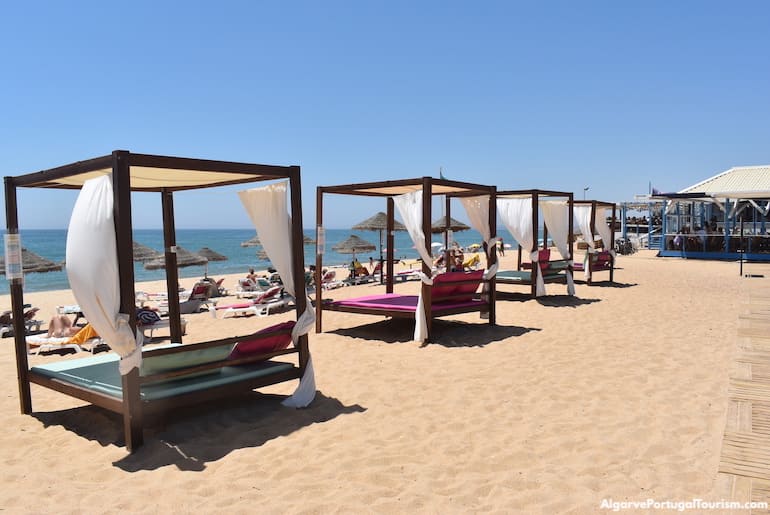
• Praia do Ancão
Famous Portuguese personalities have chosen this beach over the years, since it provides some peace and privacy away from crowded Quarteira and attracts few tourists. Its natural landscape of dunes is protected by long boardwalks, which go all the way to Quinta do Lago and offer the opportunity to spot different bird species, chameleons, and otters. There are two very recommended restaurants on the dunes, for meals with sea views.
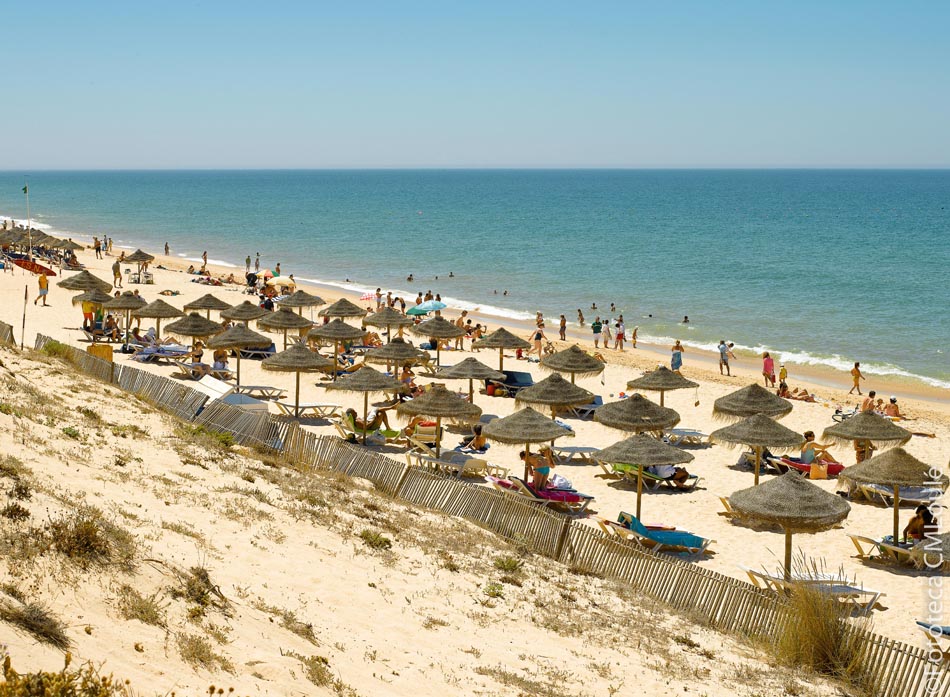
• Praia do Garrão
Divided into two sections – Nascente (East) and Poente (West) – this beach stretches for about one kilometer (about half a mile), and is backed by dunes in the east and cliffs in the west. The dunes are covered with vegetation, while the cliffs are topped by pine trees. It’s mostly frequented by guests of the luxury hotels in the area, but locals also visit the beachfront restaurants.
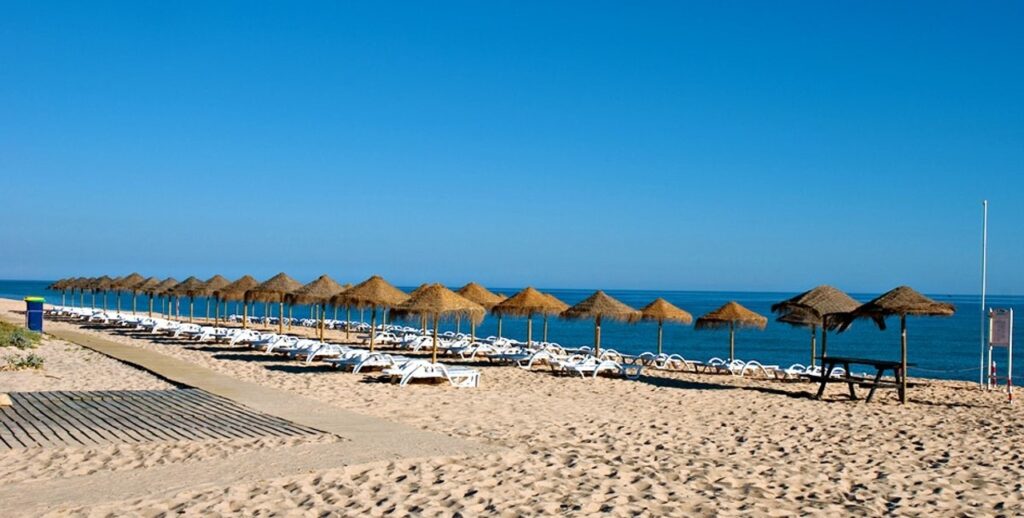
When to visit Loulé
The best day to visit Loulé is on Saturday mornings when both the gypsy and farmers markets are held. Loulé should be avoided on Sundays and Mondays. On Sundays, the covered market is closed, while on Mondays, most museums and government-managed tourist attractions are closed for the day.
If you want a peaceful trip to Loulé, consider visiting between Tuesday to Friday, as on Saturday the town will be crowded with coach loads of tourists heading to the markets.
The weekly market is an important aspect of Portuguese culture, and Loulé’s Saturday Gypsy market is the largest in the Algarve. So, if you want to experience the sights, sounds, and aromas of a busy market, you will enjoy it.
How to get to Loulé
By car, Loulé is about 25 minutes from Faro Airport.
Surprisingly for a major city, it doesn’t have a train station close to the center. The nearest station is named Loulé but is 5 kilometers to the south, so not within walking distance of the tourist attractions. Trains of the Algarve line stop here several times a day (from Faro they take just 16 minutes), but then you have to take a taxi.
If you’re relying on public transportation, the best option is the bus. The Vamus bus n°59 departs several times a day (less frequently on weekends and public holidays) from Faro and arrives in Loulé 40 minutes later. The bus station in Loulé is very central, just a 5-minute walk from the market and the castle.








